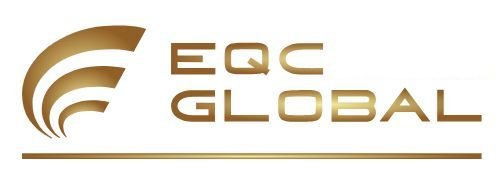CE Certification for Medical Devices Directive 93/42/EEC

Medical Devices Directive MDD
Medical Standards and MDD Tests
The CE certification process for medical devices is underpinned by a framework of medical standards that ensure devices are safe and effective for their intended use. The Medical Device Directive (MDD), formally recognized as Directive 93/42/EEC, plays a crucial role in this regard. It provides a detailed regulatory pathway that manufacturers must navigate, categorizing medical devices based on their risk levels, from Class I (low risk) to Class III (high risk). Each class delineates specific testing protocols designed to assess conformity to safety and performance requirements.
The testing protocols, often referred to as MDD tests, are critical in the evaluation of medical devices. These tests encompass various aspects, including biocompatibility, mechanical safety, and electrical safety, depending on the device category. For instance, Class I devices may require less rigorous testing than Class III devices, which often undergo comprehensive clinical evaluations to substantiate their safety and efficacy. Among the common standards applied are ISO 13485, which focuses on quality management systems, and ISO 14971, which sets forth risk management principles. Compliance with these standards is essential for gaining CE marking, which signifies that a device meets EU legislation requirements.

MDD 93/42/EEC
Benefits of Obtaining a CE Certificate for Medical Devices
Securing a CE certificate for medical devices offers numerous advantages that extend beyond mere compliance with regulations. First and foremost, obtaining CE marking significantly enhances market access within the European Union. This certification acts as a passport, enabling manufacturers to market their products freely across EU member countries. Without a CE mark, medical devices may face barriers preventing entry into lucrative EU markets, thereby limiting their potential sales and growth opportunities.
In addition to market access, a CE certificate fosters improved user trust. Healthcare professionals and consumers increasingly prioritize safety and efficacy when selecting medical devices. A CE mark indicates that the product has undergone rigorous evaluations, ensuring compliance with essential health and safety requirements outlined in Directive 93/42/EEC. This assurance not only instills confidence in users but can also enhance brand reputation, ultimately driving customer loyalty.
Moreover, obtaining a CE certificate encourages a culture of quality assurance in manufacturing processes. The requirements linked to gaining CE marking prompt companies to adhere to stringent production standards. These enhanced practices not only contribute to the creation of high-quality medical devices but also establish a systematic framework for continuous improvement. As a result, manufacturers can effectively mitigate risks, reduce the likelihood of product recalls, and ensure ongoing regulatory compliance.
The commercial benefits of CE certification cannot be overstated. By achieving this certification, companies may gain a competitive edge within the market. It positions manufacturers favorably against competitors who lack CE marking, potentially resulting in increased market share. Furthermore, having a CE certificate facilitates easier collaboration with partners and distributors, who often prefer to work with certified manufacturers, reducing perceived risks associated with non-compliant products.

Medical Devices Directive MDD Tests
Requirements for CE Certification and Additional Resources
CE certification is a crucial process that manufacturers of medical devices must undertake to demonstrate compliance with applicable regulations, particularly Directive 93/42/EEC. The requirements for obtaining CE certification involve a multi-faceted approach that includes comprehensive documentation, the establishment of a quality management system (QMS), and adherence to specific processes aimed at ensuring product safety and efficacy.
First and foremost, manufacturers must prepare a Technical File or Design Dossier that contains detailed information about the medical device. This documentation should include specifications, risk management files, clinical evaluation reports, and performance data. The Technical File serves as evidence that the device complies with essential requirements outlined in the directive and often includes test reports from notified bodies that have assessed the device’s compliance with relevant standards.
In addition to preparing the necessary documentation, manufacturers must implement a QMS that is compliant with ISO 13485. This international standard sets forth the requirements for a comprehensive management system that consistently ensures the quality of medical devices. A robust QMS not only facilitates compliance with regulatory requirements but also enhances customer satisfaction by improving process efficiency and producing high-quality devices.
The certification process itself may involve various assessments, including conformity assessments performed by a notified body. Depending on the classification of the medical device, different levels of assessment may apply, ranging from self-declaration to extensive audits and evaluations. Manufacturers must be prepared to demonstrate ongoing compliance, which typically requires regular audits and post-market surveillance activities.
For further guidance, manufacturers can access resources provided by regulatory bodies such as the European Medicines Agency (EMA) and the European Commission. Additionally, industry organizations and professional associations often offer valuable insights and support throughout the certification process. Websites dedicated to regulatory updates and best practices serve as essential tools for manufacturers aiming to navigate the complexities of CE certification effectively.
How Can We Assist You?
Would you like to learn more about our services? Feel free to contact us today!
If you’re interested in professional certification, we’d be happy to provide you with an excellent price offer.
CE Certification for Medical Devices Directive 93/42/EEC

Medical Devices Directive MDD
Medical Standards and MDD Tests
The CE certification process for medical devices is underpinned by a framework of medical standards that ensure devices are safe and effective for their intended use. The Medical Device Directive (MDD), formally recognized as Directive 93/42/EEC, plays a crucial role in this regard. It provides a detailed regulatory pathway that manufacturers must navigate, categorizing medical devices based on their risk levels, from Class I (low risk) to Class III (high risk). Each class delineates specific testing protocols designed to assess conformity to safety and performance requirements.
The testing protocols, often referred to as MDD tests, are critical in the evaluation of medical devices. These tests encompass various aspects, including biocompatibility, mechanical safety, and electrical safety, depending on the device category. For instance, Class I devices may require less rigorous testing than Class III devices, which often undergo comprehensive clinical evaluations to substantiate their safety and efficacy. Among the common standards applied are ISO 13485, which focuses on quality management systems, and ISO 14971, which sets forth risk management principles. Compliance with these standards is essential for gaining CE marking, which signifies that a device meets EU legislation requirements.

MDD 93/42/EEC
Benefits of Obtaining a CE Certificate for Medical Devices
Securing a CE certificate for medical devices offers numerous advantages that extend beyond mere compliance with regulations. First and foremost, obtaining CE marking significantly enhances market access within the European Union. This certification acts as a passport, enabling manufacturers to market their products freely across EU member countries. Without a CE mark, medical devices may face barriers preventing entry into lucrative EU markets, thereby limiting their potential sales and growth opportunities.
In addition to market access, a CE certificate fosters improved user trust. Healthcare professionals and consumers increasingly prioritize safety and efficacy when selecting medical devices. A CE mark indicates that the product has undergone rigorous evaluations, ensuring compliance with essential health and safety requirements outlined in Directive 93/42/EEC. This assurance not only instills confidence in users but can also enhance brand reputation, ultimately driving customer loyalty.
Moreover, obtaining a CE certificate encourages a culture of quality assurance in manufacturing processes. The requirements linked to gaining CE marking prompt companies to adhere to stringent production standards. These enhanced practices not only contribute to the creation of high-quality medical devices but also establish a systematic framework for continuous improvement. As a result, manufacturers can effectively mitigate risks, reduce the likelihood of product recalls, and ensure ongoing regulatory compliance.
The commercial benefits of CE certification cannot be overstated. By achieving this certification, companies may gain a competitive edge within the market. It positions manufacturers favorably against competitors who lack CE marking, potentially resulting in increased market share. Furthermore, having a CE certificate facilitates easier collaboration with partners and distributors, who often prefer to work with certified manufacturers, reducing perceived risks associated with non-compliant products.

Medical Devices Directive MDD Tests
Requirements for CE Certification and Additional Resources
CE certification is a crucial process that manufacturers of medical devices must undertake to demonstrate compliance with applicable regulations, particularly Directive 93/42/EEC. The requirements for obtaining CE certification involve a multi-faceted approach that includes comprehensive documentation, the establishment of a quality management system (QMS), and adherence to specific processes aimed at ensuring product safety and efficacy.
First and foremost, manufacturers must prepare a Technical File or Design Dossier that contains detailed information about the medical device. This documentation should include specifications, risk management files, clinical evaluation reports, and performance data. The Technical File serves as evidence that the device complies with essential requirements outlined in the directive and often includes test reports from notified bodies that have assessed the device’s compliance with relevant standards.
In addition to preparing the necessary documentation, manufacturers must implement a QMS that is compliant with ISO 13485. This international standard sets forth the requirements for a comprehensive management system that consistently ensures the quality of medical devices. A robust QMS not only facilitates compliance with regulatory requirements but also enhances customer satisfaction by improving process efficiency and producing high-quality devices.
The certification process itself may involve various assessments, including conformity assessments performed by a notified body. Depending on the classification of the medical device, different levels of assessment may apply, ranging from self-declaration to extensive audits and evaluations. Manufacturers must be prepared to demonstrate ongoing compliance, which typically requires regular audits and post-market surveillance activities.
For further guidance, manufacturers can access resources provided by regulatory bodies such as the European Medicines Agency (EMA) and the European Commission. Additionally, industry organizations and professional associations often offer valuable insights and support throughout the certification process. Websites dedicated to regulatory updates and best practices serve as essential tools for manufacturers aiming to navigate the complexities of CE certification effectively.
How Can We Assist You?
Would you like to learn more about our services? Feel free to contact us today!
If you’re interested in professional certification, we’d be happy to provide you with an excellent price offer.

